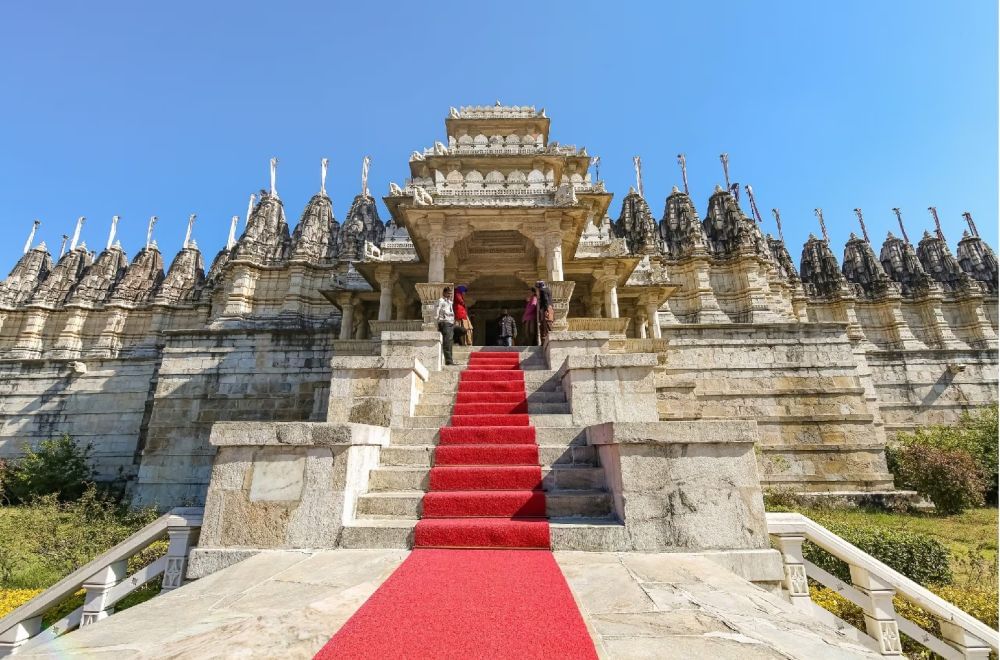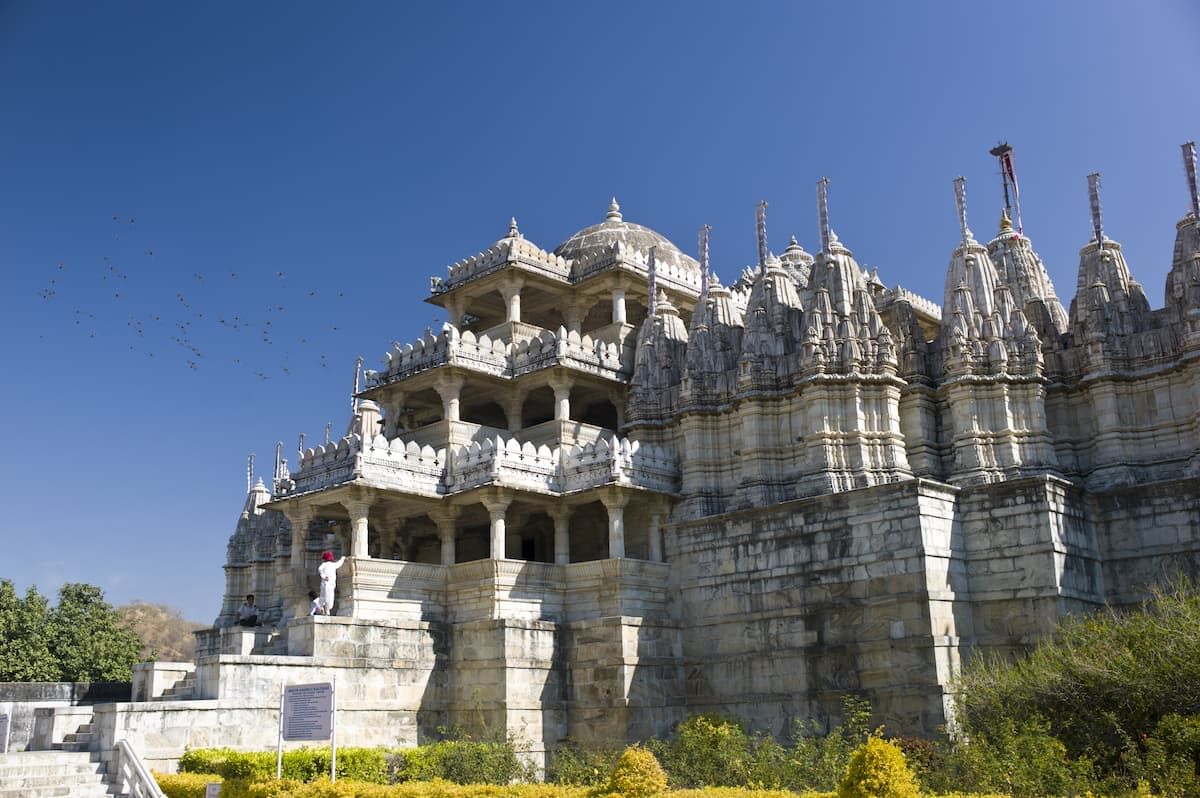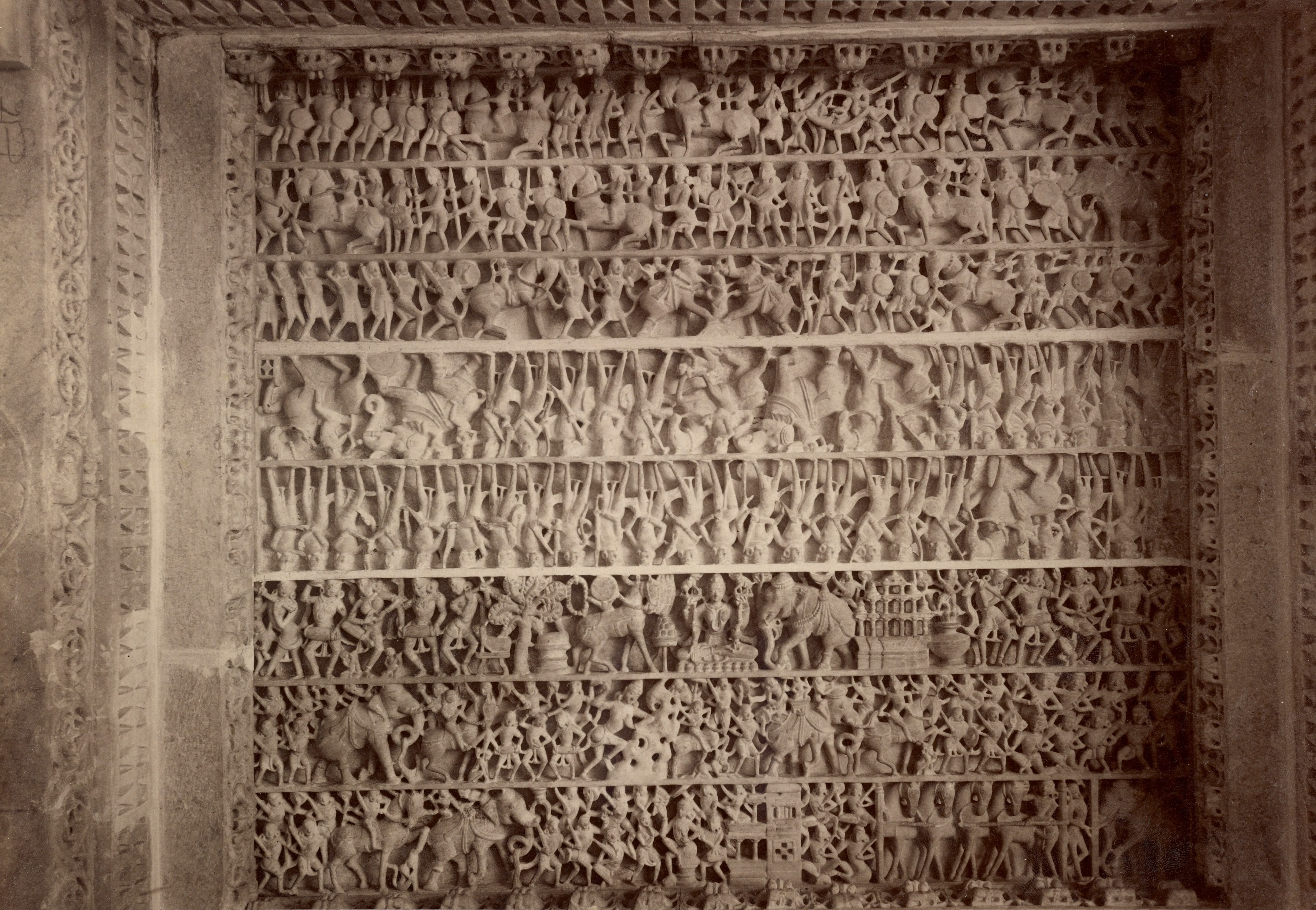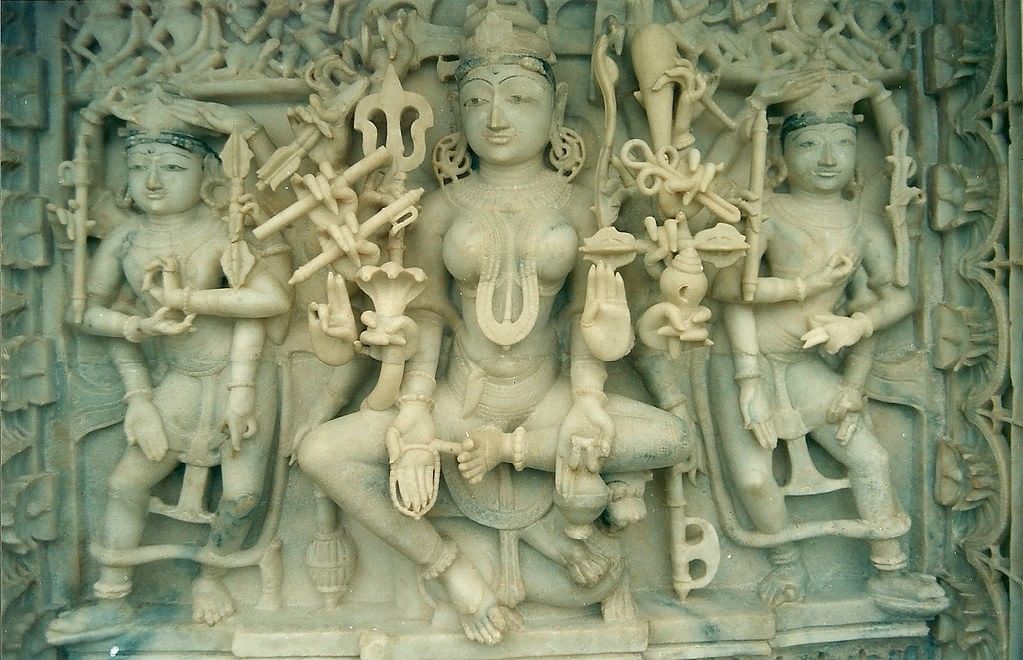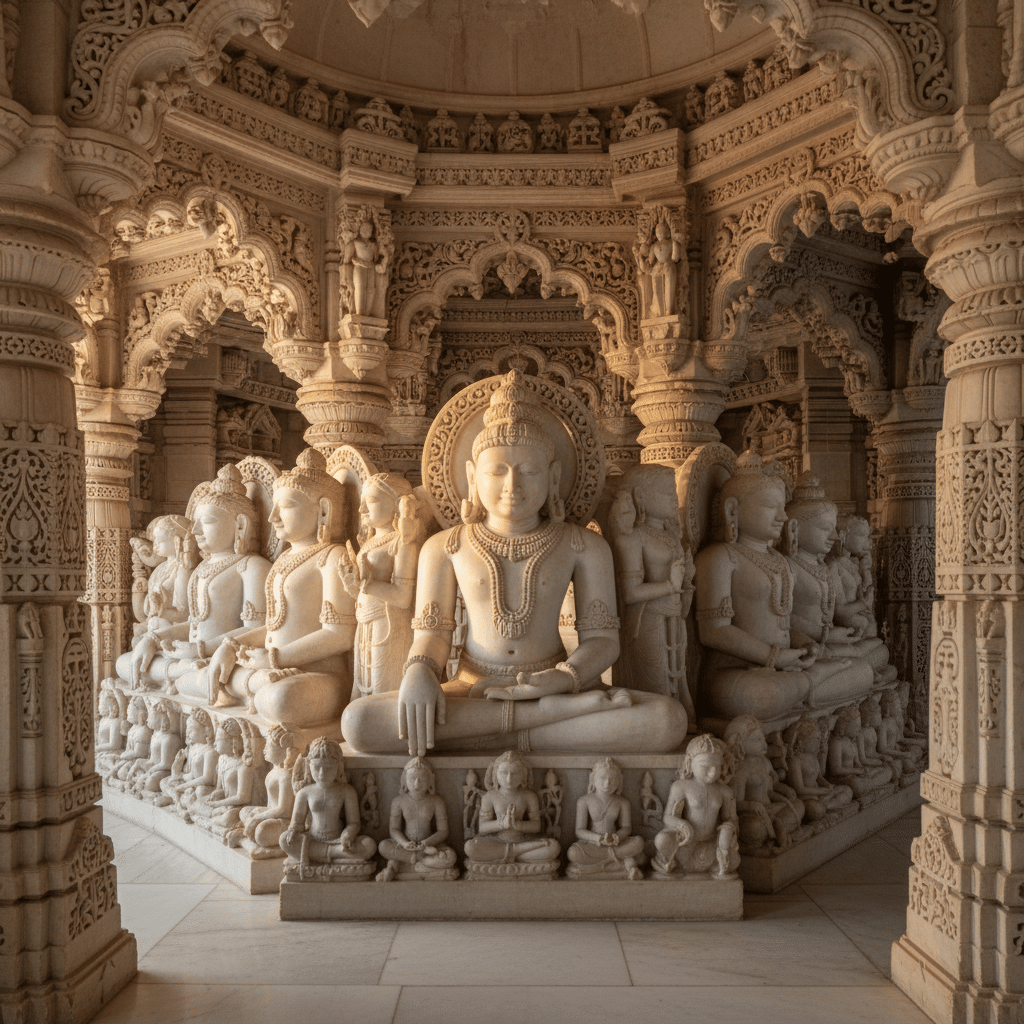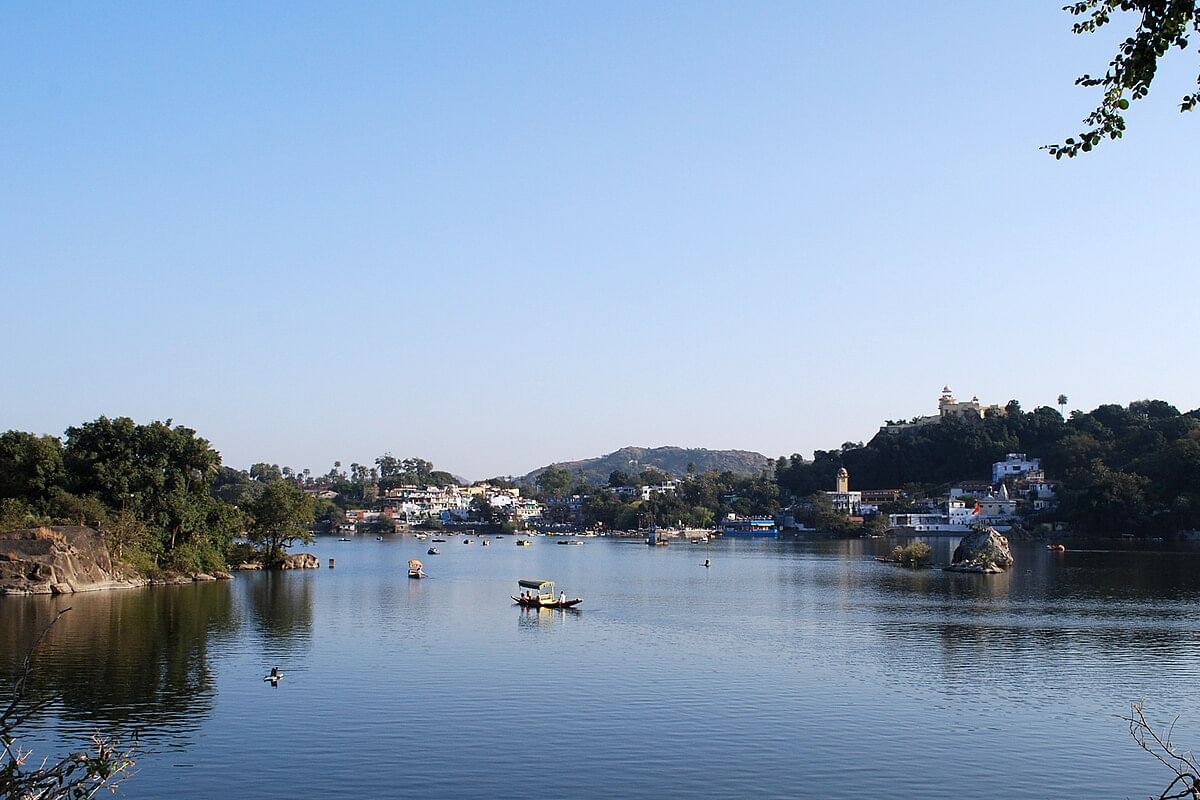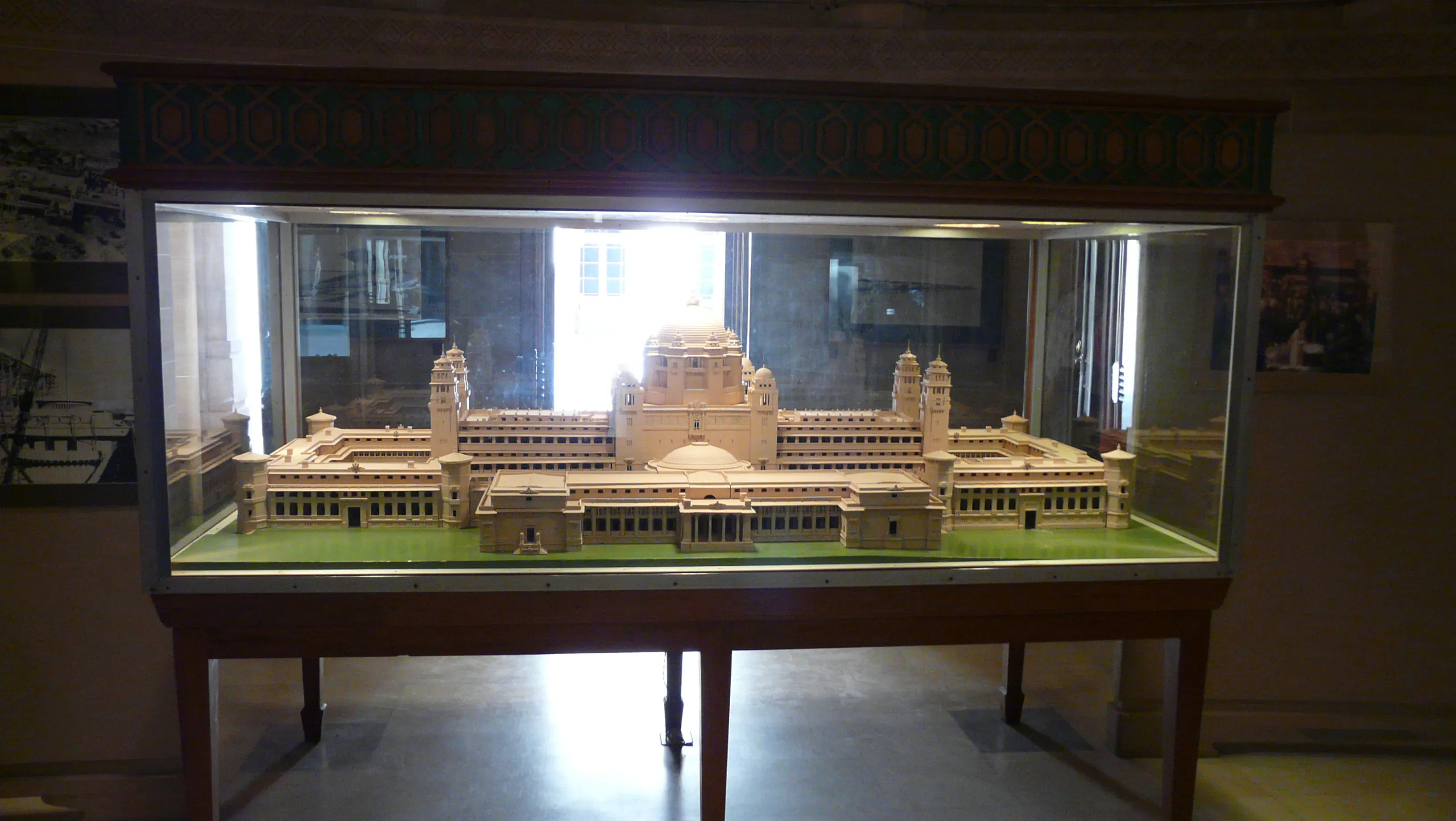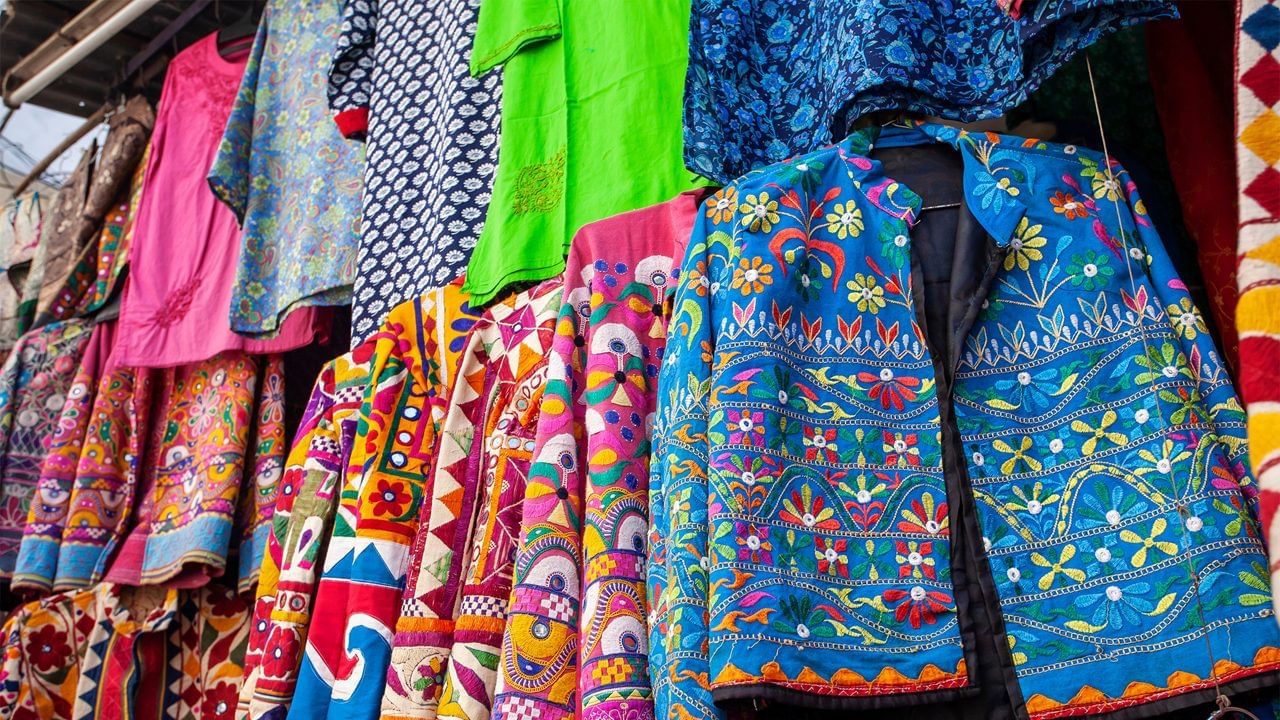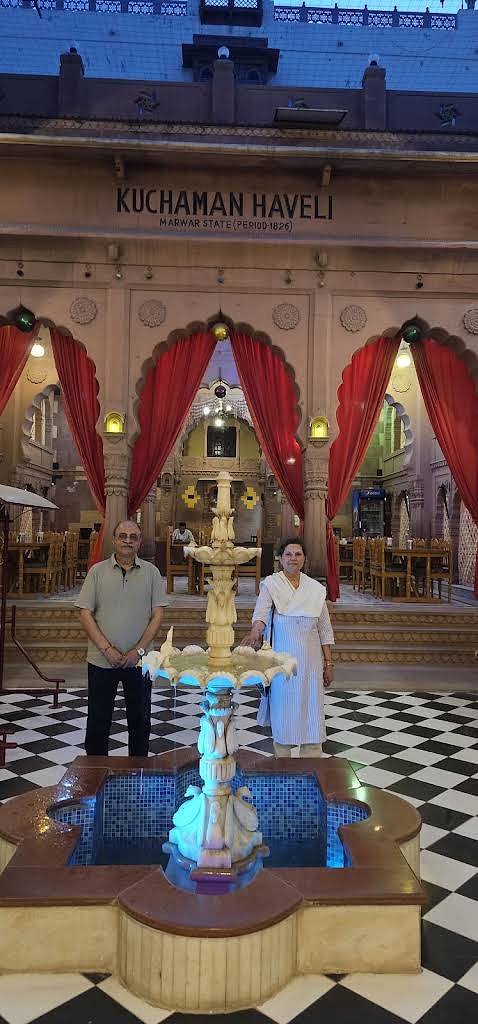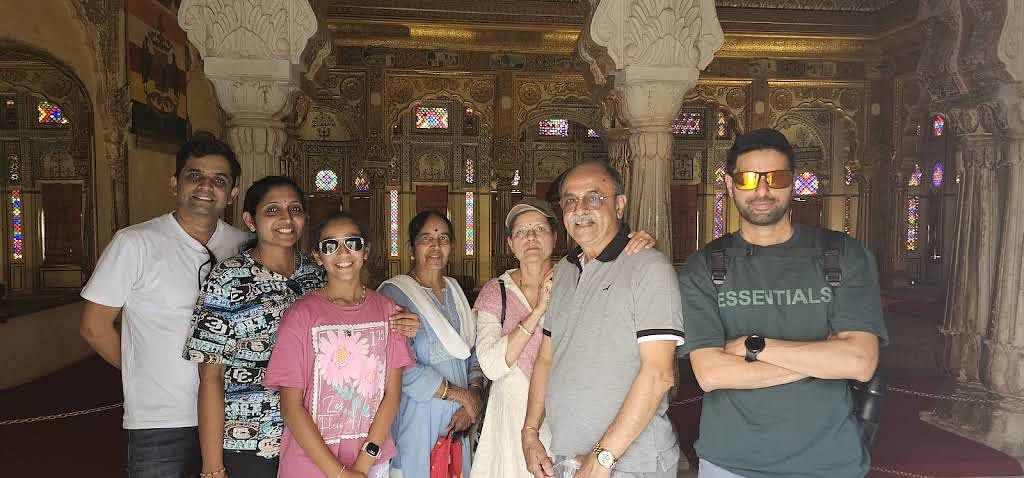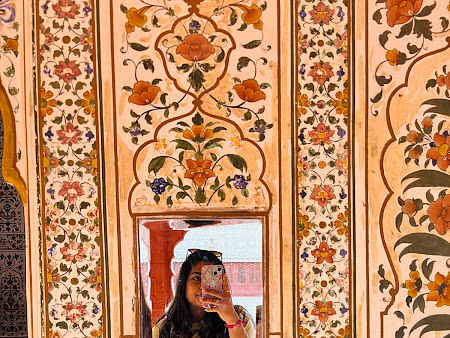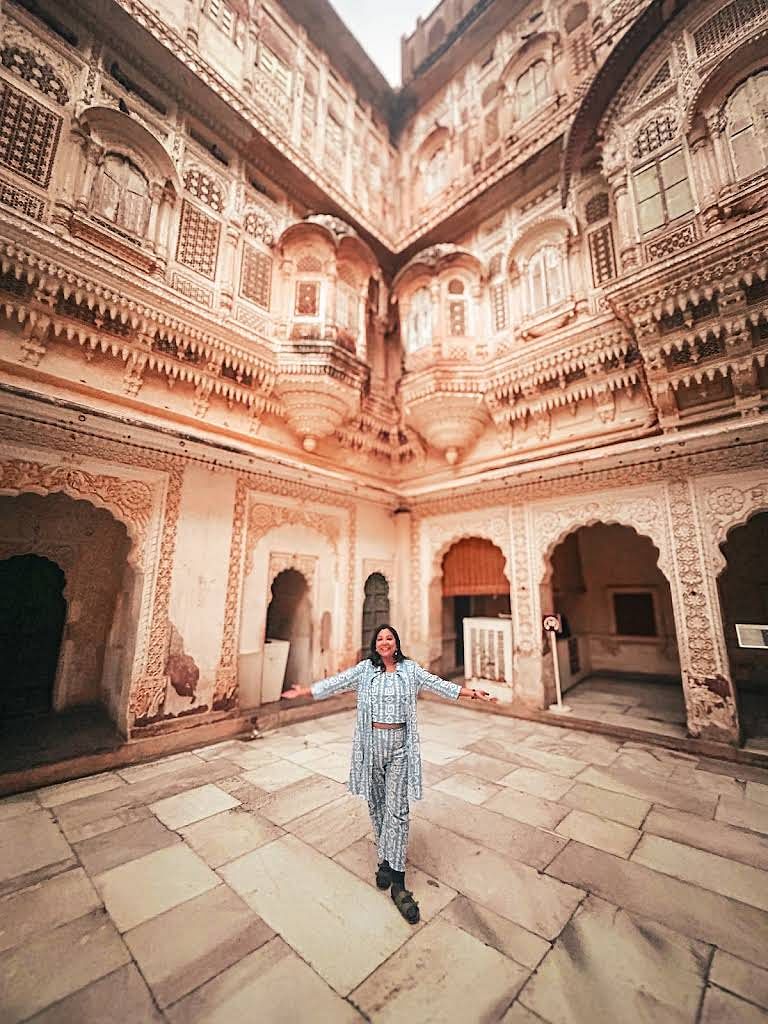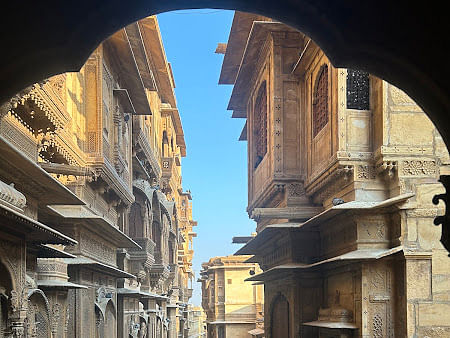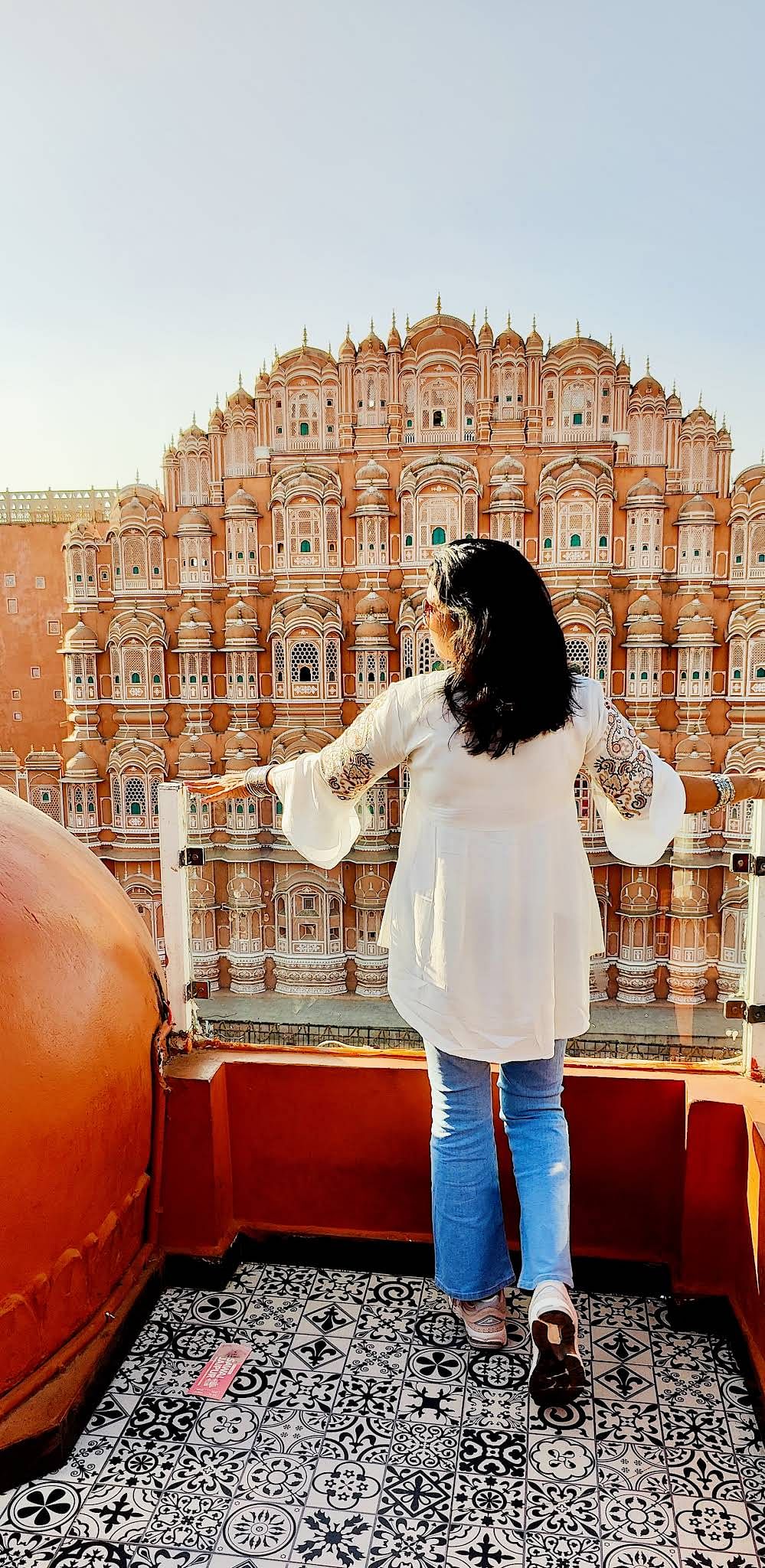Did you know the Dilwara Temples in Mount Abu were built so beautifully that the marble carvings look almost see-through? These temples are over 800 years old and are known for their amazing artwork and peaceful atmosphere. Every wall and pillar here tells a story of faith, patience, and incredible skill.
Set in the cool hills of Mount Abu, this temple complex shines bright under the sun and offers visitors a calm and spiritual experience. The silence inside feels magical, and the details in the carvings show how talented the old craftsmen were.
If you are planning your next trip and checking out Rajasthan tour packages, make sure you include this beautiful place in your list. It’s not just a temple, it’s a piece of art that will leave you amazed and inspired.
- Dilwara Temple Timings: 11:00 AM - 5:00 PM
- For Jain devotees, temple access starts from around 6:00 am; tourists are welcomed after noon
- Open Days: The complex is open daily; check the day’s schedule locally for any special events
- Dilwara Temple Timings During Festivals: Hours are generally similar, but expect bigger crowds and queues; arrive at opening time for a calmer visit
Pro Tip: If you’re exploring other places to visit in Mount Abu, plan Dilwara first after lunch hours to catch softer light and fewer tour groups. For searchers looking up Dilwara Temple timings, remember noon-to-evening is the tourist window, while mornings are reserved for prayers.
Dilwara Temple Entry Fees
- Dilwara Temple Entry Fees: Free
- Donations welcome in some notices
- Photography is usually not allowed inside the marble halls
Best Selling Rajasthan Packages
5 Unique Facts about the Dilwara Temples
- Five Temples, One Complex: Vimal Vasahi (Adinath, 1031 CE), Luna Vasahi (Neminath, 1230 CE), Pittalhar (Rishabhdev), Khartar Vasahi (Parshvanath), and Mahavir Swami (1582 CE). These are the most celebrated temples in Rajasthan for marble art.
- Marble Lacework: The ceilings and pillars are carved in ultra-fine white marble, lotus rosettes, dancers, and mythic scenes, often cited as the peak of Solanki-style craftsmanship.
- Luna Vasahi’s Pendant Dome: Look up at the Rang-mandap to see a grand central pendant surrounded by 72 seated Tirthankaras and 360 monk figures, an iconic highlight.
- Historic Patrons: Vimal Shah (minister of Bhima I) built the earliest shrine; later, ministers Vastupal and Tejpal created Luna Vasahi in memory of their brother.
- Restorations Over Centuries: From medieval repairs to 20th-century conservation, care for the complex has been continuous, keeping the carvings alive for today’s visitors.
Pro-Tip: If you’re shortlisting places to visit in Rajasthan, keep a half-day for the Dilwara Jain temples so you can linger over the ceilings without rushing.
How to Reach Dilwara Temples?
Location: Delwada, Delwara, Mount Abu, Rajasthan 307501
By Air
The nearest airport is Udaipur (Maharana Pratap – UDR). From Udaipur to Mount Abu is roughly 170–185 km; driving takes about 3.5 to 5 hours depending on route and traffic. Ahmedabad (AMD) and Jodhpur (JDH) are other options.
By Rail
The closest major station is Abu Road (ABR), about 28–29 km from the temple; taxis and buses connect ABR to Mount Abu and the temple complex. Typical drive time is ~30–40 minutes.
By Road
Mount Abu is well-linked to cities across Rajasthan and Gujarat via state/private buses and highways; from town, the temple is ~2.5to 3 km away.
Local Transport to Reach Dilwara Temples
Auto-rickshaws, taxis, and hotel cabs are common and can drop you right at the gate; walking is possible from some hotels/market areas if you’re nearby (cooler in mornings/evenings).
Quick Planner:
How to reach Dilwara Temple Mount Abu by train?→ Get off at Abu Road, then taxi/bus to the hill (30–40 min).
How to reach Dilwara Temple Mount Abu from Udaipur?→ Drive 3.5–5 hrs; buses/taxis available.
Best Time to Visit Dilwara Temple Mount Abu
Best Months To Visit Dilwara Temple
The best time to visit Dilwara Temple Mount Abu is October–March when days are pleasant and skies are clear, great for slow temple walks and nearby sightseeing. Rajasthan travel guides also mark winter as the best time to visit Rajasthan.
Weather is also comfortable in February–June and September–December (peak spring/summer crowds in March–May; post-monsoon greenery Sep–Oct), when the weather is cool, comfortable, and perfect for exploring these famous marble temples in Rajasthan.
Best Months To Visit Dilwara Temple During The Day
For the most peaceful experience, visit the Dilwara Jain temples right after they open for tourists around 12:00 pm, or later in the afternoon before closing. This timing ensures you can enjoy the carvings without heavy crowds.
Best Time To Visit Dilwara Temple During Festivals
Special events like the Mount Abu Winter Festival (in December) fill the area with music, lights, and local art, making the experience even more exciting. Major Jain observances (e.g., important prayer days) can draw more devotees; tourist entry stays from noon, but arrives early to manage queues.
If you’re creating an itinerary for top things to do in Rajasthan, then a visit to the Dilwara Temples should be on your list. The calm environment, cool breeze, and intricate carvings makes it an unforgettable stop on your journey through the hills of Mount Abu, one of the most charming temples in Rajasthan.
History & Architecture of the Dilwara Temples
The Dilwara Temples have a rich and fascinating past that reflects the devotion and craftsmanship of the Jain community. Built between the 11th and 13th centuries, this jain temple in Rajasthan complex was designed under the patronage of Vimal Shah and later expanded by ministers Vastupal and Tejpal of the Solanki dynasty. This background forms the heart of Dilwara Temple history, admired worldwide for its artistry and faith.
Among the five shrines, the Vimala Vasahi Temple (dedicated to Adinath) stands as the oldest and most detailed, while the Delvada Jain Mandir known as Luna Vasahi features a breathtaking central dome with 72 seated Tirthankaras. Each Dilwara Mandir glows with polished white marble, carved so finely that it looks almost transparent.
Architecture – Where Marble Becomes Magic
The architecture of the Dilwara Jain temples is a wonder in itself. The pillars, ceilings, and doorways are filled with delicate floral designs and mythological figures. No other Jain Temple Mount Abu or nearby structure matches the precision and balance of these carvings. The mix of devotion and design makes the Delwara temples not only a spiritual site but also one of the famous marble temples in Rajasthan.
Places to Visit Near Dilwara Temples
If you’re visiting the Dilwara Temples, don’t miss the beautiful spots nearby that make Mount Abu one of the best places to visit in Mount Abu. Each destination adds a unique charm to your journey and perfectly complements the serenity of this Jain Temple Mount Abu.
1. Nakki Lake – The Heart of Mount Abu
Just 3 km from the Dilwara Jain temples, Nakki Lake is a peaceful water body surrounded by hills and legends. It is said that gods dug the lake with their nails, giving it its name. The lake’s calm water, pedal boats, and sunset reflections.
- Timings: 9:30 AM – 6:00 PM
- Entry Fee: Free (boating charges extra)
- Highlight: The view of the lake at sunset feels almost magical, especially after visiting the marble beauty of the Dilwara Mandir.
2. Guru Shikhar – The Highest Peak of Aravalli Hills
About 15 km from the Delwara temples, Guru Shikhar offers panoramic views of the Aravalli Range. The peak also houses a small temple dedicated to Lord Dattatreya. It’s an ideal spot for those who enjoy short treks and cool mountain air.
- Timings: 9:00 AM – 5:00 PM
- Entry Fee: Free
- Highlight: Visit early morning or before sunset for clear skies and quiet surroundings. This peak shows why Mount Abu is among the most loved places in Rajasthan.
3. Toad Rock – The Fun Viewpoint
Near Nakki Lake, Toad Rock is one of the quirkiest natural formations in the region. Shaped like a toad ready to jump into the lake, it attracts trekkers and photographers alike. The climb is short but steep, rewarding visitors with a stunning aerial view of the town and lake.
- Timings: 6:30 AM – 6:45 PM
- Entry Fee: Free
- Highlight: A great spot to rest, click photos, enjoy and relax.
4. Trevor’s Tank – Nature’s Quiet Corner
Just 5 km from Mount Abu town, Trevor’s Tank is a small wildlife sanctuary created around a man-made tank. It’s a haven for bird watchers and nature lovers. You might spot peacocks, pigeons, and sometimes even crocodiles basking by the water.
- Timings: 9:00 AM – 5:00 PM
- Entry Fee: ₹50 – ₹100 (varies)
- Highlight: A calm contrast to the famous marble temples in Rajasthan, perfect for picnics and peaceful walks.
5. Achalgarh Fort & Achaleshwar Mahadev Temple
Located around 8 km from the Delvada Jain Mandir, Achalgarh Fort showcases ancient Rajput architecture. Inside lies the Achaleshwar Mahadev Temple, dedicated to Lord Shiva, believed to enshrine his toe print. The temple pond with statues of buffaloes and a giant Nandi bull is a major draw.
- Timings: 10:00 AM – 5:00 PM
- Entry Fee: Free
- Highlight: The fort’s ruins against sunset skies make it a top pick among historical temples in Rajasthan.
6. Mount Abu Wildlife Sanctuary – The Green Escape
Spread over the Aravalli hills, this sanctuary is home to leopards, sloth bears, and more than 250 bird species. It’s an ideal addition after your visit to the Jain Temple Mount Abu for a blend of nature and history. It is definitely amongst the best wildlife sanctuaries in Rajasthan.
- Timings: 9:00 AM – 5:30 PM
- Entry Fee: ₹100 – ₹300 (approx.)
- Highlight: Visit post-monsoon to see lush green landscapes and waterfalls.
Travel Tips for Visiting Dilwara Temples
Planning a visit to the Dilwara Temples? Here are some insider tips and safety guidelines that will make your trip peaceful, respectful, and memorable. Whether you’re visiting the Vimala Vasahi temple for its ancient carvings or exploring the other shrines within this jain temple in Rajasthan, these simple tips will help you enjoy your time the most.
Insider Tips
- Best time to visit: Arrive soon after the noon opening (around 12:00 pm) when it’s less crowded. You’ll have more time to admire the carvings and enjoy the serene atmosphere. Early afternoon light also brings out the natural glow of the marble, a photographer’s dream.
- Guided tours: Hire a local guide near the entrance; they share fascinating stories from Dilwara Temple history, including details of the Delvada Jain Mandir and Vimala Vasahi Temple that you might otherwise miss.
- Stay hydrated: Mount Abu’s hill weather can shift from cool to dry; carry water, especially if you plan to walk to nearby attractions.
- Explore other temples: If you’re on a heritage trail, include other marble temples in Rajasthan like Ranakpur or Lodurva to see how craftsmanship evolved.
Safety & Etiquette
- Dress modestly: Sleeveless tops, shorts, or revealing clothes are discouraged. A simple, respectful outfit suits this sacred space.
- Remove footwear: Shoes must be taken off before entering the marble halls. It helps preserve the flooring and maintains purity.
- No photography inside: Visitors are not allowed to click photos within temple interiors, this protects both the sanctity and the fragile marble carvings.
- Maintain silence: The Jain Temple Mount Abu is a spiritual site; avoid loud conversations or phone use inside.
- Respect devotees: During prayer hours or festivals, step aside quietly to let worshippers perform rituals undisturbed.
A Marble Masterpiece Awaits You
Visiting the Dilwara Temples is more than a sightseeing stop, it’s a spiritual and artistic journey. Every wall, ceiling, and sculpture in this Dilwara Mandir tells a silent story of devotion and beauty. Whether you’re exploring the Vimala Vasahi Temple, discovering the Delwara Temples’ rich heritage, or simply soaking in the calm of Mount Abu’s hills, the experience stays with you long after you leave.
At WanderOn, we believe travel should inspire both your heart and mind. So, when you plan your next escape, explore our Mount Abu Tour Packages to make your trip seamless and unforgettable.





